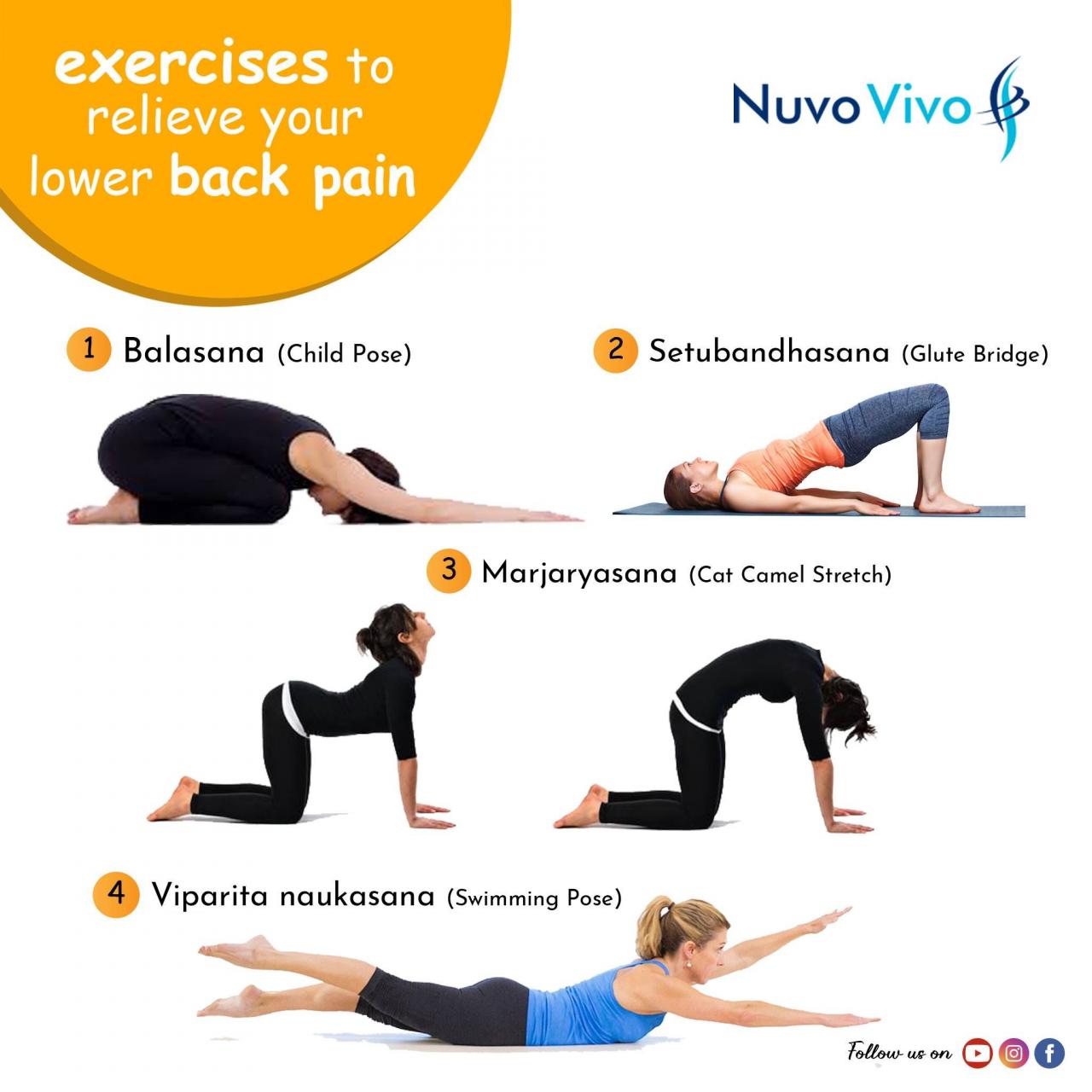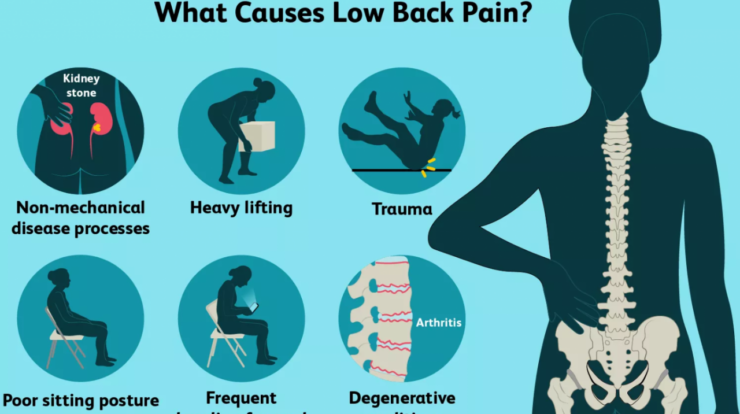
Lower back exercises at home can be an effective way to alleviate pain, improve posture, and enhance mobility. This comprehensive guide provides a structured exercise regimen, modifications for specific conditions, and additional tips to help you achieve optimal lower back health.
Lower back pain is a common issue that can stem from various causes, including muscle strain, poor posture, and spinal conditions. Regular exercise can strengthen the muscles supporting the lower back, improve flexibility, and reduce pain.
Lower Back Pain Causes: Lower Back Exercises At Home
Lower back pain is a common issue that can affect people of all ages. There are many potential causes of lower back pain, including muscle strain, poor posture, and spinal conditions. Muscle strain is the most common cause of lower back pain.
Siblings can extend their love and gratitude with Happy Mother’s Day sis , recognizing the special bond they share as mothers.
This can occur when the muscles in the back are overworked or injured. Poor posture can also lead to lower back pain. When you sit or stand for long periods of time with poor posture, it can put strain on the muscles and ligaments in your back.
Spinal conditions, such as herniated discs and spinal stenosis, can also cause lower back pain.
For expectant mothers, the question arises: Do you say Happy Mother’s Day to a pregnant woman ? While opinions vary, it’s a thoughtful gesture to acknowledge their future role and the joy they bring to the family.
Lower Back Exercises

There are a number of exercises that can help to strengthen and improve flexibility in the lower back. These exercises can help to relieve lower back pain and improve overall back health.
- Pelvic tilts:Pelvic tilts help to strengthen the muscles in the lower back and pelvis. To do a pelvic tilt, lie on your back with your knees bent and your feet flat on the floor. Tilt your pelvis up so that your lower back presses into the floor.
Celebrate the special bond between mothers and their loved ones with heartfelt greetings. Happy Mother’s Day in German is “Frohen Muttertag,” expressing the deep appreciation for all mothers.
Hold for 5 seconds, then relax. Repeat 10-15 times.
- Bridging:Bridging helps to strengthen the muscles in the lower back and buttocks. To do a bridge, lie on your back with your knees bent and your feet flat on the floor. Lift your hips up so that your body forms a straight line from your shoulders to your knees.
Remember those mothers who have passed away with Happy Heavenly Mother’s Day mom . It’s a heartfelt way to honor their memory and the love they shared.
Hold for 5 seconds, then lower back down. Repeat 10-15 times.
- Superman:Superman helps to strengthen the muscles in the lower back and buttocks. To do a superman, lie on your stomach with your arms and legs extended. Lift your arms and legs off the ground and hold for 5 seconds. Lower back down and repeat 10-15 times.
- Bird dog:Bird dog helps to strengthen the muscles in the lower back and core. To do a bird dog, start on your hands and knees. Extend your right arm forward and your left leg backward. Hold for 5 seconds, then return to the starting position.
Repeat on the other side.
- Cat-cow:Cat-cow helps to improve flexibility in the lower back and spine. To do a cat-cow, start on your hands and knees. Arch your back up like a cat, then push your belly out and lift your head and tailbone like a cow.
As we celebrate Happy Mother’s Day , we extend our heartfelt gratitude to all mothers. Whether you’re a first-time mom or a seasoned veteran, your unwavering love and dedication deserve recognition. Even those who are yet to give birth, we acknowledge their journey towards motherhood with Happy Mother’s Day wishes.
To those who have lost their mothers, may you find comfort in the memories you share. We honor the memory of our mothers with Happy Heavenly Mother’s Day messages.
Repeat 10-15 times.
Home Exercise Regimen

If you are experiencing lower back pain, it is important to start an exercise regimen to help strengthen and improve flexibility in your lower back. The following is a sample home exercise regimen that you can follow:
- Pelvic tilts: 10-15 repetitions, 2-3 sets
- Bridging: 10-15 repetitions, 2-3 sets
- Superman: 10-15 repetitions, 2-3 sets
- Bird dog: 10-15 repetitions on each side, 2-3 sets
- Cat-cow: 10-15 repetitions, 2-3 sets
Perform this exercise regimen 2-3 times per week. As you get stronger, you can gradually increase the number of repetitions and sets.
Exercise Modifications
If you have a specific lower back condition or limitation, you may need to modify some of the exercises in this regimen. For example, if you have a herniated disc, you should avoid exercises that involve twisting or bending your back.
Talk to your doctor or physical therapist about which exercises are safe for you to do.
Exercise Benefits
Regular lower back exercises can provide a number of benefits, including:
- Reduced lower back pain
- Improved posture
- Enhanced mobility
- Strengthened muscles
- Improved flexibility
Exercise Cautions
It is important to avoid exercises that aggravate your lower back pain. If you experience any pain during an exercise, stop doing it and consult with your doctor or physical therapist. It is also important to warm up before doing any exercises and to cool down afterwards.
Additional Tips
In addition to doing exercises, there are a number of other things you can do to help relieve lower back pain and improve your overall back health. These include:
- Maintaining proper posture
- Using ergonomic support
- Managing stress
- Getting regular massages
- Applying heat or cold therapy
Final Summary
By incorporating these lower back exercises into your routine, you can effectively address pain, improve your posture, and enhance your overall mobility. Remember to listen to your body and make modifications as needed. With consistency and proper form, you can experience significant benefits and enjoy a pain-free, active lifestyle.
General Inquiries
Can I do these exercises if I have a herniated disc?
It’s important to consult with a healthcare professional before starting any exercise program, especially if you have a herniated disc. Some exercises may need modifications or should be avoided.
How often should I do these exercises?
Start gradually and aim for 2-3 sessions per week. As you progress, you can increase the frequency and intensity of your workouts.
Will these exercises help me lose weight?
While these exercises primarily focus on strengthening and improving the lower back, they can contribute to overall calorie expenditure. However, for weight loss, a comprehensive approach involving diet and other forms of exercise is recommended.





